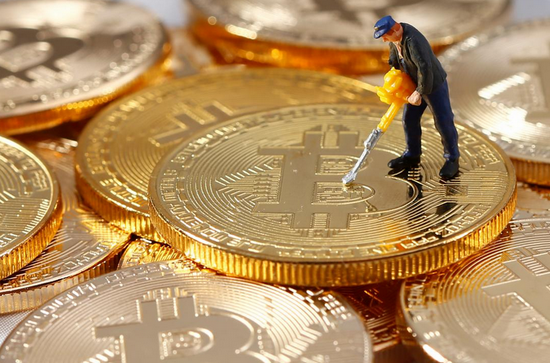|
|
Okay, so I need to figure out what Moonchain is. Let me start by recalling any information I might have heard before. I think it's related to blockchain or cryptocurrency. Maybe a blockchain platform? I remember hearing about different blockchains like Ethereum, Binance Smart Chain, and others. Moonchain might be one of those.
Wait, the name "Moonchain" sounds familiar. I think it's a Layer 1 blockchain, similar to Ethereum but maybe more focused on certain features. I've heard terms like "EVM-compatible" which stands for Ethereum Virtual Machine. So if Moonchain is EVM-compatible, that means it can run smart contracts and dApps similar to Ethereum. That's a key point.
I should check if Moonchain is part of a larger ecosystem. Sometimes blockchains are part of a family or have partnerships. For example, Binance Smart Chain (BSC) is part of Binance's ecosystem. Maybe Moonchain is under a similar umbrella? I think I've heard of Moonbeam, which is a Layer 2 solution built on Ethereum. Wait, Moonbeam is different. Moonbeam is a scaling solution for Ethereum, but Moonchain might be a separate Layer 1. Maybe they're related but distinct projects.

Let me think about the features. If it's EVM-compatible, developers can port Ethereum-based dApps to Moonchain. That's a big advantage. Also, Layer 1 blockchains often have their own native tokens. So Moonchain probably has a token, maybe called MOON or something similar. The token could be used for transaction fees, governance, or other ecosystem functions.
Transaction speed and fees are important factors. Layer 1 blockchains aim to offer faster and cheaper transactions compared to Ethereum. So Moonchain might have lower gas fees and higher throughput. That would make it attractive for decentralized applications that need to handle many transactions quickly.
Security is another aspect. Since it's a new blockchain, I wonder how it compares to more established ones. They might use similar consensus mechanisms, like Proof of Stake (PoS), which Ethereum has moved to. If Moonchain uses PoS, that would make it energy-efficient and scalable.
I should also consider the team behind Moonchain. Reputable teams with experience in blockchain development can add credibility. Maybe they have partnerships with other projects or projects that have migrated to Moonchain. For example, some decentralized exchanges or NFT projects might have chosen Moonchain for its features.
Wait, there's also the aspect of interoperability. Can Moonchain interact with other blockchains? Maybe through cross-chain bridges or protocols like Polkadot or Cosmos. If it's part of a multichain ecosystem, that could enhance its utility.
Another thing to look into is the native token's utility. Beyond transaction fees, does it play a role in governance? Can holders vote on protocol upgrades or decisions? That would give the token more value and engagement.
I should also check if there's any confusion between Moonchain and other similar-sounding projects. For instance, Moonbeam is a Layer 2, so it's different. Moonriver is another Layer 1 blockchain, maybe part of the same family? There's also Moonbase Alpha, which is a testnet for Moonbeam. So it's important to distinguish these.
In terms of adoption, has Moonchain seen significant traction? Are there notable projects built on it? If major projects have migrated or are planning to use Moonchain, that's a positive sign. Also, looking at exchange listings and liquidity could indicate market perception.
Potential risks include the usual ones with new blockchains: security vulnerabilities, low adoption, regulatory issues, or competition from more established chains. It's important to assess how Moonchain addresses these challenges.
To summarize, Moonchain is likely a Layer 1 EVM-compatible blockchain aiming to offer scalable, low-cost transactions. It probably has a native token used for various ecosystem functions. The team and partnerships, along with existing projects on the chain, will influence its success. Comparing it to other chains like BSC or Ethereum will highlight its strengths and weaknesses.
Moonchain is a Layer 1 blockchain designed to offer a scalable, low-cost, and EVM-compatible ecosystem for decentralized applications (dApps) and smart contracts. Here's a structured overview:
Key Features:
EVM Compatibility:
Runs on the Ethereum Virtual Machine (EVM), allowing seamless migration of Ethereum-based dApps and smart contracts.
Facilitates easy integration for developers familiar with Ethereum tools and standards.
Layer 1 Scalability:
Aims to provide high throughput and faster transaction confirmation times compared to Ethereum, targeting cost-effective solutions for mass adoption.
Native Token (MOON):
The MOON token serves multiple purposes: transaction fees, governance participation, staking, and ecosystem incentives.
Governance allows token holders to propose and vote on protocol upgrades.
Security & Consensus:
Likely employs a Proof of Stake (PoS) mechanism, enhancing energy efficiency and scalability.
Emphasizes security through audits and community-driven protocols.
Ecosystem & Partnerships:
Part of the Polkadot ecosystem, leveraging cross-chain bridges for interoperability with other blockchains.
Hosts projects in DeFi, NFTs, and gaming, with notable integrations and partnerships enhancing its utility.
Adoption & Traction:
Gained attention for attracting projects like DEXs and NFT platforms seeking cost-effective alternatives.
listed on major exchanges, though adoption is still growing compared to established chains.
Comparison with Similar Projects:
Moonbeam: A Layer 2 solution for Ethereum, distinct from Moonchain's Layer 1 focus.
Moonriver: Another Layer 1 chain in the Polkadot ecosystem, often compared for similar goals.
Binance Smart Chain (BSC): Competes on low fees and EVM compatibility but operates independently.
Risks & Considerations:
New Chain Risks: Potential security vulnerabilities, regulatory scrutiny, and market volatility.
Competition: Faces challenges from established chains like Ethereum, BSC, and Solana.
Conclusion:
Moonchain positions itself as a cost-effective, scalable alternative for Ethereum dApps, backed by EVM compatibility and Polkadot integration. Success hinges on continued adoption, project growth, and effective governance. While promising, users should assess risks typical of newer blockchains before engaging.
|
|